Shoulder
Shoulder Anatomy
The shoulder is the most flexible joint in the body enabling a wide range of movements including, forward flexion, abduction, adduction, external rotation, internal rotation, and 360-degree circumduction.
Thus, the shoulder joint is considered the most insecure joint of the body but the support of ligaments, muscles and tendons function to provide the required stability.
Bones of the Shoulder
The shoulder is a ball and socket joint made up of three bones, namely the humerus, scapula and clavicle.
The end of the humerus or upper arm bone forms the ball of the shoulder joint. An irregular shallow cavity in the scapula called the glenoid cavity forms the socket for the head of the humerus to fit in. The two bones together form the glenohumeral joint, which is the main joint of the shoulder.
The scapula is a flat triangular-shaped bone that forms the shoulder blade. It serves as the site of attachment for most of the muscles that provide movement and stability to the joint. The scapula has four bony processes - acromion, spine, coracoid and glenoid cavity. The acromion and coracoid process serve as places for attachment of the ligaments and tendons.
The clavicle bone or collarbone is an S-shaped bone that connects the scapula to the sternum or breastbone. It forms two joints: the acromioclavicular joint, where it articulates with the acromion process of the scapula, and the sternoclavicular joint where it articulates with the sternum or breast bone. The clavicle also forms a protective covering for important nerves and blood vessels that pass under it from the spine to the arms.
Soft Tissues of the Shoulder
The ends of all articulating bones are covered by smooth tissue called articular cartilage which allows the bones to slide over each other without friction enabling smooth movement. Articular cartilage reduces pressure and acts as a shock absorber during movement of the shoulder bones.
Extra stability to the glenohumeral joint is provided by the glenoid labrum, a ring of fibrous cartilage that surrounds the glenoid cavity. The glenoid labrum increases the depth and surface area of the glenoid cavity to provide a more secure fit for the half-spherical head of the humerus.
Ligaments of the Shoulder
Ligaments are the thick strands of fibers that connect one bone to another. The ligaments of the shoulder joint include:
- Coraco-clavicular ligaments: These ligaments connect the collarbone to the shoulder blade at the coracoid process.
- Acromio-clavicular ligament: This connects the collarbone to the shoulder blade at the acromion process.
- Coraco-acromial ligament: It connects the acromion process to the coracoid process.
- Glenohumeral ligaments: A group of 3 ligaments that form a capsule around the shoulder joint, and connect the head of the arm bone to the glenoid cavity of the shoulder blade. The capsule forms a water-tight sac around the joint. Glenohumeral ligaments play a very important role in providing stability to the otherwise unstable shoulder joint by preventing dislocation.
Muscles of the Shoulder
The rotator cuff is the main group of muscles in the shoulder joint and is comprised of 4 muscles. The rotator cuff forms a sleeve around the humeral head and glenoid cavity, providing additional stability to the shoulder joint while enabling a wide range of mobility.
The deltoid muscle forms the outer layer of the rotator cuff and is the largest and strongest muscle of the shoulder joint.
Tendons of the Shoulder
Tendons are strong tissues that join muscle to bone allowing the muscle to control the movement of the bone or joint. Two important groups of tendons in the shoulder joint are the biceps tendons and rotator cuff tendons.
Bicep tendons are the two tendons that join the bicep muscle of the upper arm to the shoulder. They are referred to as the long head and short head of the bicep.
Rotator cuff tendons are a group of four tendons that join the head of the humerus to the deeper muscles of the rotator cuff. These tendons provide more stability and mobility to the shoulder joint.
Nerves of the Shoulder
Nerves carry messages from the brain to muscles to direct movement (motor nerves) and send information about different sensations such as touch, temperature and pain from the muscles back to the brain (sensory nerves). The nerves of the arm pass through the shoulder joint from the neck.
These nerves form a bundle at the region of the shoulder called the brachial plexus. The main nerves of the brachial plexus are the musculocutaneous, axillary, radial, ulnar and median nerves.
Blood vessels of the Shoulder
Blood vessels travel along with the nerves to supply blood to the arms. Oxygenated blood is supplied to the shoulder region by the subclavian artery that runs below the collarbone. As it enters the region of the armpit, it is called the axillary artery and further down the arm, it is called the brachial artery. The main veins carrying de-oxygenated blood back to the heart for purification include:
- Axillary vein: this vein drains into the subclavian vein
- Cephalic vein: this vein is found in the upper arm and branches at the elbow into the forearm region. It drains into the axillary vein.
- Basilic vein: this vein runs opposite the cephalic vein, near the triceps muscle. It drains into the axillary vein.
For more information on Glenoid Labrum Tears please click here
Conditions
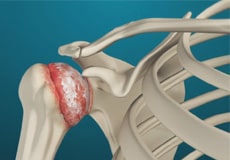
Arthritis of the Shoulder
The term arthritis literally means inflammation of a joint but is generally used to describe any condition in which there is damage to the cartilage. Damage of the cartilage in the shoulder joint causes shoulder arthritis. Inflammation is the body's natural response to injury. The warning signs that inflammation presents are redness, swelling, heat and pain.

Shoulder Pain
Pain in the shoulder suggests a shoulder injury which is more common in athletes participating in sports such as swimming, tennis, pitching and weightlifting. The injuries are caused due to the over usage or repetitive motion of the arms.
In addition to pain, shoulder injuries also cause stiffness, restricted movements, difficulty in performing routine activities and popping sensation.

Rotator Cuff Tear
The rotator cuff is a group of tendons in the shoulder joint providing support and enabling a wide range of motion. Major injury to these tendons may result in tear of these tendons, a condition called rotator cuff tear. It is one of the most common causes of shoulder pain in middle aged adults and older individuals.

Shoulder Impingement
Shoulder impingement is the condition of inflammation of the tendons of the shoulder joint. It is one of the most common causes of pain in the adult shoulder. The shoulder is a 'ball-and-socket' joint. A ‘ball' at the top of the upper arm bone, humerus, fits neatly into a 'socket’, called the glenoid, which is part of the shoulder blade or scapula.
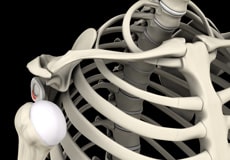
Shoulder Instability
Shoulder instability is a chronic condition that causes frequent dislocations of the shoulder joint.
A dislocation occurs when the end of the humerus (the ball portion) partially or completely dislocates from the glenoid (the socket portion) of the shoulder.
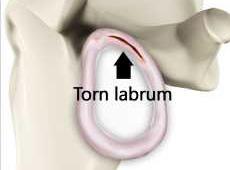
Glenoid Labrum Tears
The shoulder joint is a “ball and socket” joint that enables smooth gliding and thereby the movements of arms. However, it is inherently unstable because of the shallow socket. A soft rim of cartilage, the labrum, lines the socket and deepens it so that it accommodates the head of the upper arm bone better.
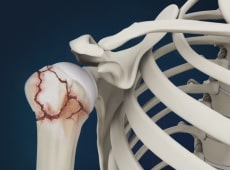
Shoulder Fracture
A break in a bone that makes up the shoulder joint is called a shoulder fracture.
The clavicle and end of the humerus closest to the shoulder are the bones that usually get fractured. The scapula on the other hand is not easily fractured because of its protective cover by the surrounding muscles and chest tissue.
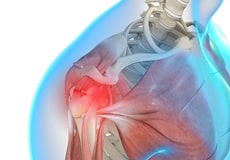
Shoulder Trauma
Shoulder injuries most commonly occur in athletes participating in sports such as swimming, tennis, pitching and weightlifting. The injuries are caused due to the over usage or repetitive motion of the arms.
Shoulder injuries cause pain, stiffness, restricted movements, difficulty in performing routine activities, and a popping sensation.

Clavicle Fracture
Clavicle fracture, also called broken collarbone, is a very common sports injury seen in people who are involved in contact sports such as football and martial arts as well as impact sports such as motor racing. A direct blow over the shoulder that may occur during a fall on an outstretched arm or a motor vehicle accident may cause the clavicle bone to break.
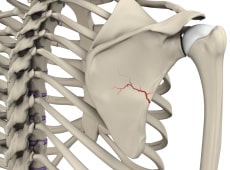
Fracture of the Shoulder Blade
The scapula (shoulder blade) is a flat, triangular bone providing attachment to the muscles of the back, neck, chest and arm. The scapula has a body, neck and spine portion.
Scapular fractures are uncommon but do occur and require a large amount of force to fracture. They are usually the result of intense trauma, such as a high-speed motor vehicle accident or a fall from a height onto one’s back.
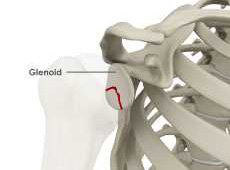
Glenoid Fractures
The glenoid is the socket that forms the ball and socket joint of the shoulder. Fractures of the glenoid are rare but can occur due to major trauma or during high-energy sports activities.
Symptoms of a glenoid fracture include shoulder pain, swelling, deformity at the site of the fracture and inability to move the arm.
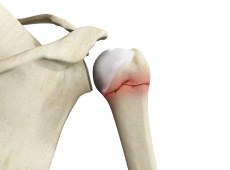
Proximal Humerus Fractures
The humerus is the upper arm bone and it forms two joints —shoulder joint and elbow joint. The proximal humerus is the upper end of the arm bone that forms the shoulder joint. Fractures of the proximal humerus are common in elderly individuals suffering from osteoporosis.
Procedures
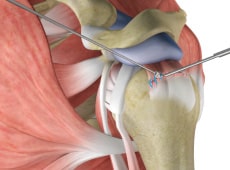
Arthroscopic Rotator Cuff Repair
The rotator cuff is a group of tendons in the shoulder that provide support and enable a wide range of motion of the shoulder joint. Major injuries can cause rotator cuff tears. A rotator cuff tear is one of the most common causes of shoulder pain in middle-aged adults and older individuals.
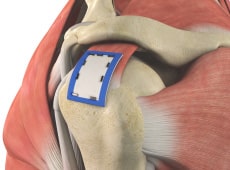
REGENETEN◊ Bioinductive Implant
Rotator cuff disease is a significant and costly problem2-4 that causes ongoing pain and limits patients’ mobility.5 Progressive in nature, small tears tend to grow in size and severity over time, eventually requiring surgery.1
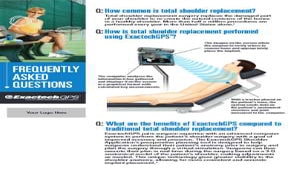
ExactechGPS Shoulder FAQs
ExactechGPS pairs surgeon expertise with an advanced computer system to perform the patient’s shoulder surgery with a goal of improved accuracy and precision. The ExactechGPS Shoulder Application’s preoperative planning tool is designed to help surgeons understand their patient’s anatomy prior to surgery and plan the surgery through a virtual simulation.
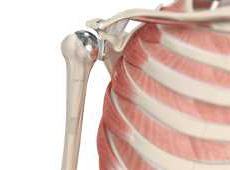
Shoulder Joint Replacement
The shoulder is a highly movable body joint that allows various movements of the arm. It is a ball and socket joint, where the head of the humerus (upper arm bone) articulates with the socket of the scapula (shoulder blade) called the glenoid. The two articulating surfaces of the bones are covered with cartilage, which prevents friction between the moving bones.

Reverse Shoulder Replacement
Reverse total shoulder replacement, is an advanced surgical technique specifically designed for rotator cuff tear arthropathy, a condition where the patient suffers from both shoulder arthritis and a rotator cuff tear.
The shoulder joint is a ball and socket joint formed by the union of the head of the upper arm bone (humerus) and the shoulder socket (glenoid).
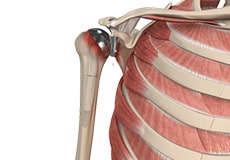
Revision Shoulder Replacement
Total shoulder replacement is the replacement of the head of the humerus (upper arm bone) and the glenoid cavity (cavity of the shoulder blade) into which the humerus fits, with artificial prostheses to relieve pain, swelling and stiffness caused due to damage of cartilage at the articulating surfaces.
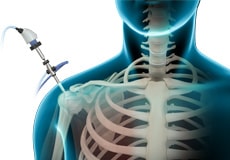
Shoulder Arthroscopy
Arthroscopy is a minimally invasive diagnostic and surgical procedure performed for joint problems. Shoulder arthroscopy is performed using a pencil-sized instrument called an arthroscope. The arthroscope consists of a light system and camera to project images onto a computer screen for your surgeon to view the surgical site.
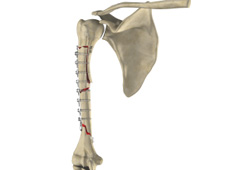
Complex Fracture Repair
Our body reacts to a fracture by protecting the injured area with a blood clot and callus or fibrous tissue. Bone cells begin forming on the either side of the fracture line. These cells grow towards each other and thus close the fracture.
During this surgical procedure, your surgeon will reposition the broken bone ends into normal position and then uses special screws or metal plates to hold the bone fragments in place.
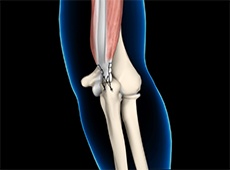
Triceps Tendon Repair
Triceps repair is a surgical procedure that involves the repair of a ruptured (torn) triceps tendon. A tendon is a tough band of fibrous tissue which connects muscle to bone, and works together with muscles in moving your arms, fingers, legs, and toes. The triceps tendons connect the triceps muscles to the shoulder blade and elbow in your arm. Rupture of the triceps tendon is a rare injury which occurs as a result of the detachment of the triceps tendon from the attached bone.
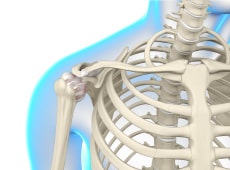
Frozen Shoulder Treatment
Adhesive capsulitis occurs when the shoulder capsule becomes inflamed and stiff. The shoulder capsule surrounds the shoulder joint and the rotator cuff containing synovial fluid to lubricate the joint.
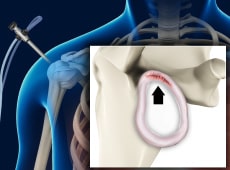
Labral Repair
The shoulder joint is a “ball and socket” joint that enables smooth gliding and thereby the movements of arms. However, it is inherently unstable because of the shallow socket. A soft rim of cartilage, the labrum, lines the socket and deepens it so that it accommodates the head of the upper arm bone better.
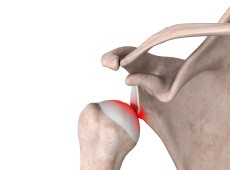
Shoulder Stabilization
Shoulder instability is a chronic condition that causes frequent dislocations of the shoulder joint. A dislocation occurs when the end of the humerus (the ball portion) partially or completely dislocates from the glenoid (the socket portion) of the shoulder. A partial dislocation is referred to as a subluxation whereas a complete separation is referred to as a dislocation.
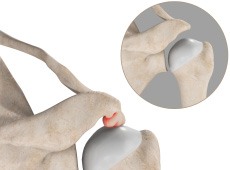
Shoulder Decompression
Impingement is one of the most common causes of pain in the shoulder. It results from pressure on the rotator cuff from part of the shoulder blade (scapula) as the arm is raised to the shoulder height. The pain may be due to a “bursitis” or inflammation of the bursa overlying the rotator cuff or a “tendonitis” of the cuff itself. In some cases, a partial tear of the rotator cuff may cause impingement pain.
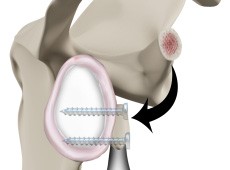
Latarjet Procedure
The shoulder joint provides a wide range of movement to the upper extremity, but overuse or trauma can cause instability to the joint. The Latarjet procedure is a surgical procedure performed to treat shoulder instability by relocating a piece of bone with an attached tendon to the shoulder joint.

Patient Education Brochure
ExactechGPS® Guided Personalized Surgery is the latest advancement in technology that provides surgeons with real-time visual guidance in total shoulder surgery.
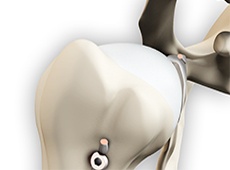
Arthroscopic Biceps Tenotomy or Tenodesis
Biceps Tenodesis is usually recommended in people with pain at their anterior shoulder, related to the long head of the biceps. This tendon is released in the shoulder joint, to relieve pain.

